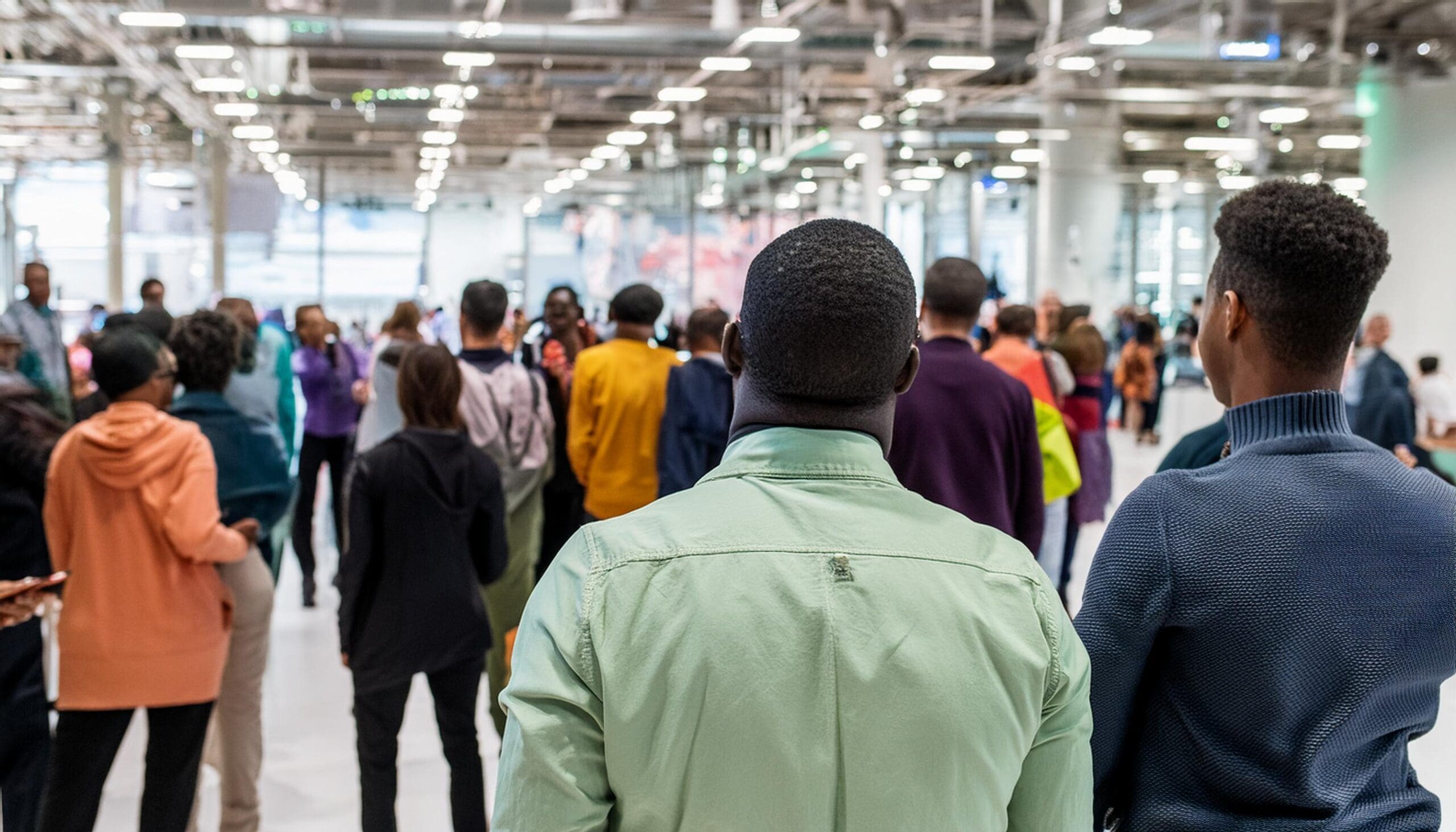In today’s diverse and interconnected world, the importance of accessibility in events cannot be overstated. As event planners and organizers, our goal is to create experiences that not only captivate and engage but also welcome and accommodate all attendees, regardless of their abilities or disabilities. Inclusive event planning is no longer just a nice-to-have; it’s a crucial aspect of successful event management that can significantly impact your event’s reach, reputation, and overall success.
Inclusive event planning encompasses a wide range of considerations, from physical accessibility and communication strategies to sensory accommodations and digital inclusivity. By embracing these principles, event organizers can create environments where every attendee feels valued, respected, and able to participate fully in the event experience.
The benefits of creating accessible events extend far beyond simply complying with legal requirements. For organizers, inclusive events can lead to increased attendance, enhanced brand reputation, and a more diverse and engaged audience. For attendees, accessible events offer equal opportunities for networking, learning, and enjoyment, fostering a sense of belonging and community that can turn first-time participants into loyal supporters.
In this comprehensive guide, we’ll explore the key elements of inclusive event planning, discuss common challenges and their solutions, and provide practical strategies for creating events that are truly accessible to all. Whether you’re planning a small workshop or a large-scale conference, the insights and tools shared here will help you transform your events into inclusive, impactful experiences that resonate with every attendee.
Understanding Accessibility in Event Planning
Accessibility in event planning goes far beyond simply providing wheelchair ramps or sign language interpreters. It’s about creating an environment where all attendees can fully participate, engage, and enjoy the event experience without barriers. Let’s delve deeper into what accessibility means in the context of events and why it’s crucial for every event planner to understand and implement.
Defining Accessibility in the Context of Events
In the world of events, accessibility refers to the design of experiences, spaces, and information that can be easily accessed, understood, and used by people with a wide range of abilities. This includes physical accessibility, but also extends to sensory, cognitive, and technological accessibility. An accessible event ensures that everyone, regardless of their abilities or disabilities, can:
- Navigate the venue easily
- Access all relevant information
- Participate in activities and discussions
- Engage with speakers, exhibitors, and other attendees
- Enjoy the full range of event offerings without barriers
Accessibility is not just about compliance; it’s about creating an inclusive atmosphere that welcomes and values all participants.
Types of Disabilities to Consider
When planning an accessible event, it’s important to consider a wide range of disabilities, including:
- Mobility impairments: Affecting movement and requiring considerations like wheelchair access, even surfaces, and appropriate seating options.
- Visual impairments: Ranging from low vision to complete blindness, requiring considerations like large print materials, screen reader-compatible digital content, and descriptive audio.
- Hearing impairments: Ranging from partial to complete hearing loss, necessitating options like sign language interpretation, captioning, and hearing loop systems.
- Cognitive disabilities: Including conditions like dyslexia, ADHD, or autism spectrum disorders, which may require clear signage, quiet spaces, or simplified information presentation.
- Invisible disabilities: Such as chronic pain, fatigue syndromes, or mental health conditions, which may require flexible scheduling or quiet rest areas.
Legal Requirements and Industry Standards
Event planners must be aware of legal requirements and industry standards regarding accessibility. While these can vary by location, some key considerations include:
- Americans with Disabilities Act (ADA): In the United States, this law mandates that public events must be accessible to people with disabilities.
- Web Content Accessibility Guidelines (WCAG): These international standards ensure digital content is accessible, which is crucial for event websites and apps.
- ISO 21902:2021: This international standard provides guidelines for accessible tourism, including events and meetings.
Industry associations like the International Association of Exhibitions and Events (IAEE) and the Professional Convention Management Association (PCMA) also provide guidelines and best practices for accessible event planning.
By understanding these requirements and standards, event planners can ensure they’re not only creating more inclusive events but also protecting themselves from potential legal issues. Remember, accessibility is not just about meeting minimum requirements; it’s about striving to create the best possible experience for all attendees.
SyncEvent’s platform is designed with accessibility in mind, offering features that help event planners meet these standards and create truly inclusive events. From accessible registration processes to customizable communication options, SyncEvent provides the tools you need to make your events welcoming to all.
Key Challenges in Inclusive Event Planning
Creating truly inclusive events is a noble goal, but it comes with its own set of challenges. Understanding these obstacles is the first step towards overcoming them and creating events that welcome all attendees.
Common Obstacles Faced by Event Planners
- Budget Constraints: Implementing accessibility features often requires additional resources, which can strain already tight event budgets.
- Lack of Awareness: Many event planners may not fully understand the diverse needs of attendees with disabilities, leading to oversights in planning.
- Venue Limitations: Finding venues that are fully accessible can be challenging, especially in older buildings or certain geographic locations.
- Technology Barriers: Ensuring that all digital components of an event (websites, apps, virtual platforms) are accessible can be technically complex.
- Time Pressures: Incorporating accessibility considerations into every aspect of event planning can be time-consuming, especially when working with tight deadlines.
- Diverse Needs: Accommodating the wide range of disabilities and individual needs can be overwhelming, as there’s no one-size-fits-all solution.
The Impact of Non-Inclusive Events
When events fail to be inclusive, the consequences can be significant for both attendees and organizers:
- For Attendees:
- Exclusion and discrimination feelings
- Missed networking and learning opportunities
- Negative experiences that discourage future event attendance
- For Organizers:
- Reputation damage and potential legal issues
- Reduced attendance and revenue
- Missed opportunities for diverse perspectives and ideas
- Negative word-of-mouth affecting future events
By addressing these challenges head-on, event planners can create more inclusive experiences that benefit all stakeholders. SyncEvent’s platform offers tools to help overcome many of these obstacles, from accessible registration processes to customizable communication options, making it easier to plan and execute inclusive events.
Essential Elements of Inclusive Event Planning
Creating an inclusive event requires careful consideration of various elements. By focusing on these key areas, you can ensure that your event is accessible and welcoming to all attendees.
Venue Selection and Physical Accessibility
Choosing the right venue is crucial for an inclusive event. Look for spaces that offer:
- Step-free access to all areas
- Wide doorways and corridors for wheelchair users
- Accessible restrooms on every floor
- Adequate lighting for those with visual impairments
- Elevators with audible floor announcements and Braille buttons
Remember, accessibility extends beyond the venue itself. Consider proximity to public transportation and the availability of accessible parking spaces.
Communication and Information Accessibility
Effective communication is key to an inclusive event. Implement these strategies:
- Provide materials in multiple formats (large print, Braille, digital)
- Offer sign language interpretation for presentations
- Use clear, simple language in all communications
- Ensure your event website is screen-reader friendly
- Provide live captioning for both in-person and virtual events
SyncEvent’s platform supports these efforts by offering customizable registration forms and communication tools that can be adapted for various accessibility needs.
Sensory Considerations in Event Design
Be mindful of attendees with sensory sensitivities:
- Create quiet spaces for those who need breaks from noise and crowds
- Use non-flashing lights and avoid sudden loud noises
- Offer fidget toys or stress balls for those who benefit from them
- Consider the scent-free policy to accommodate those with chemical sensitivities
Technology and Digital Accessibility
In our increasingly digital world, technological accessibility is crucial:
- Ensure your event app is compatible with screen readers
- Provide alternative text for images on your website and in presentations
- Use high-contrast color schemes for better readability
- Offer virtual attendance options for those unable to attend in person
SyncEvent’s platform is designed with digital accessibility in mind, offering features like customizable font sizes and color contrast options.
By incorporating these essential elements into your event planning process, you’re not just complying with accessibility standards – you’re creating an event that truly welcomes and values all attendees. Remember, an inclusive event is a successful event, fostering diversity, engagement, and positive experiences for everyone involved.
Strategies for Creating Inclusive Events
Implementing inclusive strategies throughout your event planning process ensures a welcoming experience for all attendees. Let’s explore key approaches to make your events more accessible and inclusive.
Pre-event Planning and Accessibility Assessments
Start with a comprehensive accessibility assessment:
- Conduct a thorough venue walkthrough, identifying potential barriers
- Use accessibility checklists to ensure you’re covering all bases
- Consult with accessibility experts or disability organizations for insights
- Plan for accommodations well in advance to avoid last-minute scrambles
SyncEvent’s platform offers customizable planning tools that can help you track and manage these assessments efficiently.
Designing Accessible Registration Processes
Your registration process sets the tone for inclusivity:
- Offer multiple registration methods (online, phone, email)
- Ensure your online registration form is screen-reader compatible
- Include questions about specific accommodation needs
- Provide clear information about available accessibility features
SyncEvent’s registration system is designed with accessibility in mind, allowing attendees to easily communicate their needs during sign-up.
Developing Inclusive Marketing and Promotional Materials
Inclusive marketing reaches a wider audience:
- Use diverse imagery in your promotional materials
- Ensure your website meets Web Content Accessibility Guidelines (WCAG)
- Provide event information in multiple formats (text, audio, video)
- Use plain language and avoid jargon
- Include accessibility information in all event promotions
Training Staff and Volunteers on Accessibility Issues
Well-trained staff are crucial for an inclusive event:
- Provide comprehensive accessibility training to all team members
- Cover topics like disability etiquette and proper use of accessibility equipment
- Assign specific roles for managing accessibility needs during the event
- Encourage staff to be proactive in offering assistance
By implementing these strategies, you’re not just creating an accessible event – you’re fostering an environment of inclusion and respect. Remember, inclusivity is an ongoing process. Continuously seek feedback and be ready to adapt your strategies as you learn more about your attendees’ needs.
SyncEvent’s platform supports these inclusive strategies with features like customizable registration forms, accessibility-focused planning tools, and options for diverse communication methods. By leveraging these tools, you can streamline your inclusive event planning process and create experiences that truly welcome all attendees.
Leveraging Technology for Enhanced Accessibility
In today’s digital age, technology plays a crucial role in making events more accessible and inclusive. Let’s explore how you can harness various tech solutions, including SyncEvent’s features, to enhance accessibility at your events.
Using SyncEvent’s Features to Improve Event Accessibility
SyncEvent offers a range of tools designed to make your events more inclusive:
Customizable Accessibility Settings
SyncEvent’s platform allows you to tailor the user experience to individual needs:
- Adjustable font sizes and high-contrast color schemes for visually impaired users
- Screen reader-compatible interface for seamless navigation
- Customizable registration forms to capture specific accessibility requirements
Addressing Common Accessibility Challenges
SyncEvent helps tackle frequent accessibility issues:
- Real-time communication tools for quick response to accessibility requests
- Automated reminders for accessibility-related tasks during event planning
- Analytics to track and improve accessibility measures over time
Assistive Technologies for Various Types of Disabilities
Beyond SyncEvent, consider incorporating these assistive technologies:
- Hearing loop systems for attendees with hearing aids
- Braille displays and screen magnification software for visually impaired participants
- Speech-to-text apps for real-time transcription
- Mobility aids like motorized scooters or wheelchairs available for rent
Virtual and Hybrid Events: Expanding Accessibility Through Technology
The rise of virtual and hybrid events has opened new avenues for accessibility:
- Remote participation options for those unable to attend in person
- AI-powered live captioning and translation services
- Virtual reality tours of physical venues for advance accessibility planning
- Digital networking tools with built-in accessibility features
By leveraging these technologies, you can create more inclusive events that cater to a diverse audience. Remember, the goal is not just to provide access, but to ensure that all attendees can fully participate and engage with your event content and community.
SyncEvent’s platform serves as a central hub for managing these various technological solutions, allowing you to streamline your accessibility efforts and create a seamless experience for all attendees. From the initial planning stages to post-event analysis, SyncEvent’s features support your commitment to accessibility and inclusion.
As technology continues to evolve, stay informed about new accessibility tools and features. Regularly update your event tech stack to ensure you’re providing the most inclusive experience possible. With the right technology and a commitment to accessibility, you can create events that truly welcome and empower all participants.
Accommodating Diverse Needs at Your Event
Creating an inclusive event means considering the diverse needs of all attendees. By addressing various aspects of accessibility, you can ensure everyone feels welcome and comfortable throughout your event.
Providing Accessible Transportation Options
Transportation can be a significant barrier for some attendees. Consider these options:
- Partner with accessible transportation services for door-to-door pickups
- Provide clear information about public transit options with accessibility features
- Ensure ample accessible parking spaces close to the venue entrance
- Offer shuttle services with wheelchair-accessible vehicles
Remember to communicate these options clearly in your event information. SyncEvent’s platform allows you to easily share transportation details with attendees during the registration process.
Offering Inclusive Food and Beverage Options
Dietary requirements are an important aspect of inclusivity:
- Include options for common dietary restrictions (vegetarian, vegan, gluten-free, kosher, halal)
- Clearly label all food items with ingredients and potential allergens
- Train staff to handle food allergy inquiries professionally
- Provide a variety of non-alcoholic beverage options
Use SyncEvent’s registration system to collect dietary information in advance, helping you plan accordingly.
Creating Quiet Spaces and Sensory-Friendly Areas
Some attendees may need breaks from the main event environment:
- Designate quiet rooms or areas for those who need a calm space
- Create sensory-friendly zones with dimmed lighting and reduced noise
- Provide fidget toys or stress-relief items in these areas
- Ensure these spaces are easily accessible and clearly marked
Ensuring Accessible Emergency Procedures
Safety is paramount for all attendees:
- Develop and communicate clear emergency evacuation procedures for people with disabilities
- Train staff on assisting attendees with various needs during emergencies
- Ensure emergency exits are accessible and clearly marked
- Provide visual and auditory emergency alerts
By implementing these accommodations, you create an event environment that respects and values the diverse needs of all attendees. Remember, inclusivity is about more than just physical accessibility – it’s about creating an atmosphere where everyone feels considered and welcome.
SyncEvent’s platform can help you manage these diverse needs efficiently. From collecting specific requirements during registration to communicating important information to attendees, SyncEvent provides tools to streamline your inclusive event planning process. By leveraging these features, you can focus on creating a truly welcoming experience for all participants.
Engaging with the Disability Community
Creating truly inclusive events goes beyond implementing accessibility features. It involves actively engaging with the disability community to gain valuable insights and ensure your efforts are meaningful and effective.
Partnering with Disability Organizations for Insights and Support
Collaborating with disability organizations can significantly enhance your event’s inclusivity:
- Reach out to local disability advocacy groups for guidance and resources
- Invite disability experts to consult on your event planning process
- Consider sponsoring or partnering with disability-focused organizations
- Attend workshops or training sessions offered by these groups to deepen your understanding
These partnerships can provide invaluable insights into the needs and preferences of attendees with disabilities, helping you create a more inclusive event experience.
Including People with Disabilities in Event Planning and Execution
Representation matters in every aspect of event planning:
- Include people with disabilities on your planning committee
- Hire staff and volunteers with disabilities for various event roles
- Invite speakers and presenters with disabilities to share their expertise
- Ensure your marketing materials represent people with diverse abilities
By involving people with disabilities throughout the planning and execution process, you gain authentic perspectives and demonstrate a genuine commitment to inclusivity.
Gathering and Implementing Feedback from Attendees with Disabilities
Continuous improvement is key to creating increasingly inclusive events:
- Use SyncEvent’s survey tools to collect post-event feedback specifically on accessibility
- Conduct focus groups with attendees who have disabilities
- Encourage open communication during the event for real-time feedback
- Analyze the feedback and implement changes in future events
Remember to share how you’ve acted on previous feedback, showing attendees that their input is valued and acted upon.
By actively engaging with the disability community, you not only improve your events but also contribute to a more inclusive society. This engagement demonstrates that your commitment to accessibility goes beyond compliance – it’s about creating a truly welcoming environment for all.
SyncEvent’s platform can assist in this process by providing tools for feedback collection and analysis, helping you track your progress in inclusivity over time. By leveraging these features, you can continually refine your approach to creating events that are accessible, inclusive, and enjoyable for all attendees.
Measuring the Success of Your Inclusive Event
Creating an inclusive event is an ongoing process that requires continuous evaluation and improvement. By measuring the success of your efforts, you can identify areas for growth and refine your approach to inclusivity.
Key Metrics for Evaluating Accessibility and Inclusion
To gauge the effectiveness of your inclusive event planning, consider tracking these metrics:
- Attendance rates of people with disabilities
- Utilization of accessibility services (e.g., sign language interpreters, assistive listening devices)
- Number and nature of accessibility-related requests or complaints
- Engagement levels of attendees with disabilities in various event activities
- Diversity of speakers and presenters, including those with disabilities
SyncEvent’s analytics tools can help you track many of these metrics, providing valuable insights into the success of your inclusive strategies.
Gathering and Analyzing Feedback on Accessibility Features
Feedback from attendees is crucial for understanding the real-world impact of your accessibility efforts:
- Use post-event surveys to collect specific feedback on accessibility features
- Conduct interviews or focus groups with attendees who used accessibility services
- Analyze social media mentions and comments related to event accessibility
- Review any formal complaints or suggestions received during the event
SyncEvent’s platform offers customizable survey tools that can be tailored to gather this crucial feedback efficiently.
Continuous Improvement in Inclusive Event Planning
Use the insights gained from your metrics and feedback to drive ongoing improvements:
- Identify recurring issues or challenges and develop targeted solutions
- Share success stories and lessons learned with your team and stakeholders
- Set specific, measurable goals for improving accessibility at future events
- Stay informed about new accessibility technologies and best practices
Remember, the goal is progress, not perfection. Each event is an opportunity to learn and improve your inclusive practices.
By consistently measuring and evaluating your efforts, you demonstrate a genuine commitment to inclusivity that goes beyond a one-time effort. This approach not only improves your events but also contributes to a more inclusive event industry as a whole.
SyncEvent’s comprehensive platform supports this process of continuous improvement, from data collection to analysis and planning. By leveraging these tools, you can streamline your evaluation process and focus on creating increasingly inclusive and successful events that truly welcome all attendees.
Embracing Inclusivity: The Future of Event Planning
As we’ve explored throughout this guide, inclusive event planning is not just a trend—it’s a fundamental shift in how we approach creating experiences for all attendees. Let’s recap the key strategies and look towards a more inclusive future in event planning.
Key Inclusive Event Planning Strategies
Remember these essential elements as you plan your next event:
- Prioritize accessibility in venue selection and physical spaces
- Ensure communication and information are accessible to all
- Consider sensory needs in your event design
- Leverage technology to enhance accessibility
- Accommodate diverse needs, from transportation to dietary requirements
- Engage actively with the disability community
- Measure and continually improve your inclusive practices
The Transformative Power of Accessibility
Embracing inclusivity in event planning does more than just meet legal requirements—it transforms the entire event experience:
- Creates a welcoming environment for all attendees
- Fosters diversity and innovation through varied perspectives
- Expands your audience reach and potential impact
- Enhances your brand reputation as an inclusive organization
- Contributes to a more equitable and accessible society
By making inclusivity a core part of your event planning process, you’re not just planning an event—you’re creating a space where everyone can fully participate, learn, and connect.
Implement Inclusive Strategies with SyncEvent
As you move forward in your inclusive event planning journey, consider how SyncEvent can support your efforts. Our platform is designed to streamline the process of creating accessible and inclusive events, from registration to post-event analysis.
Ready to take the next step in making your events more inclusive? We invite you to schedule a free 15-minute demo to learn more about SyncEvent’s accessibility features. Our team is excited to show you how our tools can help you create events that truly welcome all attendees.
Schedule your demo today and join us in shaping the future of inclusive event planning. Together, we can create experiences that resonate with every attendee, regardless of their abilities or background.












